Summer fruit salad
Ingredients:
- 3 cups spring mix lettuce
- 2 ½ cups pecans, coarsely chopped
- 2 or 3 fresh shallots, minced
- 1 teaspoon granulated sugar
- 1 teaspoon red wine vinegar
- 2 teaspoons red wine
- ¼ cup dried apricots
- ¼ cup fresh red raspberries
- ¼ cup fresh blueberries
- ¼ cup blue cheese, crumbled
Make the chipotle-candied pecans
- ½ cup granulated sugar
- ½ cup water
- 2 ½ cups pecan pieces
- 1/8 teaspoon ground cinnamon
- 1/8 teaspoon chili powder
Preheat oven to 375° F. Line a baking sheet with parchment paper.
In a small saucepan on the stovetop, combine sugar and water. Bring to a boil, whisking to dissolve the sugar.
Remove from the heat, stir in the pecans and toss to coat. Spread the nuts on a single layer on the prepared baking sheet. Toast in the oven for about 8-10 minutes, or until toasty.
While still warm, sprinkle the nuts with a mixture of cinnamon and chili powder.
Set aside to cool completely. Once cool, you can store the candied nuts in an airtight container at room temperature for up to a month.
Make the dressing
In a small bowl, whisk together the minced shallots, sugar, red wine vinegar and red wine.
Heat the saucepan to low heat and add the mixture. Cook for 5 minutes or until shallots are tender.
The minimum internal temperature should be 140 degrees F. or above.
Cool quickly to an internal temperature of 40 degrees F. or below.
Store in an airtight jar in the refrigerator at 40 degrees F. or below for up to 1 week.
Assemble the salad
Put the lettuce in a stainless-steel serving bowl.
Add the blue cheese, raspberries and blueberries.
Top with candied pecans and apricots.
Just before serving, drizzle the dressing over the salad, to taste.
Nutritional information:
- Serving size: 1 salad (about 3 cups)
- Calories per serving: 300
- Total Fat: 15 g
- Cholesterol: 20 mg
- Sodium: 230 mg
- Carbohydrates: 13 g
- Fiber: 3 g
- Sugar: 17 g
- Protein: 3 g
Approved by:
Clay Simmons
Executive Chef
Genesis Food and Nutrition Services
Find more recipes at genesishcs.org/eatwell.

This colorful and nutritious summer salad recipe features candied pecans, apricots, berries, and blue cheese on top of fresh lettuce.
Safely savor summer foods
A lot of people enjoy outdoor barbecues in the summer. From grilled chicken to s’mores, we can cook many things outside while enjoying the nice weather. However, we want to be safe from fires and ensure our food is fully cooked.
Check the temperature
Thermometers are not just for people who are sick or have a fever. They can be used for food, too, especially meat. According to the U.S. Department of Agriculture (USDA) color is never reliable to ensure your food is thoroughly cooked. Using a food thermometer ensures fully cooked food. This includes frozen food with labels such as “cook and serve,” “ready to cook” and “oven ready.” Below is a list of grilled foods that need to be cooked to a specific temperature to ensure they are safe to eat.
- Cook poultry (whole or ground) to 165 F.
- Cook beef, pork, lamb and veal steaks, chops and roasts to 145 F.
- Cook ground beef, pork, lamb and veal to 160 F.
- Cook egg dishes to 160 F.
- Cook fish to 145 F.
- For safety and quality, allow meat to rest for at least three minutes before carving or consuming.
One-hour rule
Most of us have heard of the five-second rule. What does the one-hour rule mean when it comes to food? The one-hour rule is when the temperature outside rises to 90 F or higher. According to the USDA, foods such as meat, poultry, dips, cold salads or cut fruits or vegetables are safe to sit at the table for an hour. After an hour, harmful bacteria may start to grow, which can lead to foodborne illnesses.
Remember to keep your cold foods cold and hot foods hot so you and your family can enjoy many backyard barbecues this summer.
Ready to get healthy?
Sign up for our digital newsletters to receive health tips, recipes, success stories for inspiration and information about new doctors to help you on your journey to better health.
Genesis HealthCare System’s Health and Wellness content conveniently provides accurate and helpful information. Your health history and current health may impact suggestions provided through our Health and Wellness content. Although we hope this information is helpful, it is not a substitute for your doctor's medical advice. Before making any significant changes, please consult your doctor.

We can cook many things outside while enjoying summer weather. Remember these food temperature tips so your family can enjoy many backyard barbecues.
Shoes matter
Ask the princess with the glass slipper
The sun is out, and the sand stretches to endless water. It’s going to be a great day if you can keep from scratching your foot on a rock, getting the tops of your feet burned, stepping on a bee while barefoot or twisting an ankle while running in flip-flops.
Those perfect summer days with no worries are rare. Make sure you get the most out of them with appropriate footwear.
We know that part of summer fun is letting your toes escape their winter prison of socks and closed-toe shoes. An increase in activities over the summer months, especially after an inactive winter, can lead to multiple foot concerns. With a little planning, you can still let your piggies out and go home safe.
Make the right choice
When it comes to summer, a lot of us want the sleekest slides and hassle-free flip-flops. However, when buying summer shoes with minimal coverage, you should pick the proper footwear for the right occasion.
To keep joints and feet healthy, it’s best to give them a cushion. Our providers at Genesis Foot & Ankle recommend wearing sandals that fit the shape of your feet. Without supportive sandals, stress fractures are more common.
Straps and traction keep shoes on your feet and prevent tumbling on slick surfaces. Genesis Foot & Ankle says stretching the Achilles tendon can also reduce foot pressures and the chances of injury.
Fancy glass slippers that match the perfect sundress also have drawbacks. An increase in heel height can lead to greater instability, leading to injury.
Flip flops can be a good choice around pools, in public showers and even hotels where problems like plantar warts, athlete’s foot, ringworm and other infections want to hitch a free ride on your feet.
Trust us, these are not the vacation souvenirs you want to take home. If you are going to be active, consider more substantial footwear to eliminate the risk of the sole bending under itself or slipping off and causing you to fall.
A moment in the sun
After your feet have wintered in heavy socks and snuggly boots, letting them bask in the sun often feels good. However, as your feet usually get minimal exposure to the sun, it makes them easy to burn.
Be sure to cover the tops of your feet and ankles, along with other exposed skin, with the appropriate sunscreen. Reapply after being in the water.
Put your feet up and rest
A few simple tips can help keep your feet healthy. Enjoy the carefree days this summer with the right shoes. Your feet will appreciate the royal treatment.
Ready to get healthy?
Sign up for our digital newsletters to receive health tips, recipes, success stories for inspiration and information about new doctors to help you on your journey to better health.
Genesis HealthCare System’s Health and Wellness content conveniently provides accurate and helpful information. Your health history and current health may impact suggestions provided through our Health and Wellness content. Although we hope this information is helpful, it is not a substitute for your doctor's medical advice. Before making any significant changes, please consult your doctor.

Those perfect summer days with no worries are rare. Make sure you get the most out of them with the proper footwear.
Exercise safely even when it's hot
Summer is a great time for being active. Even if you live where it gets hot or humid, there are ways to safely stay active. It depends on how active you already are and how used to hot weather you are. Anytime you exercise, it’s a good idea to take these precautions.
Drink plenty of water
You lose fluid when you are active. If you lose too much, it can result in dehydration, muscle cramps or even heat exhaustion. In hot weather, drink plenty of fluids before, during and after activity. For longer exercise periods, sports drinks contain carbohydrates and minerals called electrolytes that may help prevent dehydration.
Watch for signs of dehydration and heat-related illnesses such as heat exhaustion and heatstroke. Signs of dehydration include having a dry mouth and eyes, and feeling dizzy.
Don’t exercise as hard when it’s hot
Take rest breaks. Exercise more slowly than usual or for a shorter time. Stay in the shade when you can. Wear light-colored, breathable clothes. And always wear sunscreen.
Use extra caution if you have health problems
If you are overweight, have health problems, take medicines or use alcohol, you may be at a higher risk for heat-related illness. You may also have trouble if you are not used to exercising in warmer weather.
Check the air quality before outdoor activities, especially if you have conditions like asthma. Airnow.gov provides air quality ratings for your location and a pollution index.
Consider changing outside activity on hot days
When it’s hot and humid, take extra precautions when you’re active. This might mean you change your activity or when you choose to do it. Here are some ideas:
- Take morning or evening walks.
- Go for a bike ride. Find shaded areas and ride during cooler times of day.
- Go swimming.
- Do light yard work or gardening.
- Wash your car. Give yourself a splash to stay cool.
Find an indoor activity
Sometimes it isn’t safe to be active outdoors. There are many ways to be active indoors, such as:
- Go for walks indoors. Take a walk at the mall with a friend. Check with local schools and churches. They may have indoor gyms where you can walk.
- Get fit while you watch TV or listen to music with hand weights or stretch bands. Use cans of food if you don’t have weights.
- Use an online exercise video or a smartphone app.
- Join a gym or health club.
- Try a fitness class or a new indoor activity, such as dancing or water aerobics.
- Get involved in indoor sports leagues.
Always ask your doctor for the best exercises for you.
Ready to get healthy?
Sign up for our digital newsletters to receive health tips, recipes, success stories for inspiration and information about new doctors to help you on your journey to better health.
Genesis HealthCare System’s Health and Wellness content conveniently provides accurate and helpful information. Your health history and current health may impact suggestions provided through our Health and Wellness content. Although we hope this information is helpful, it is not a substitute for your doctor's medical advice. Before making any significant changes, please consult your doctor.
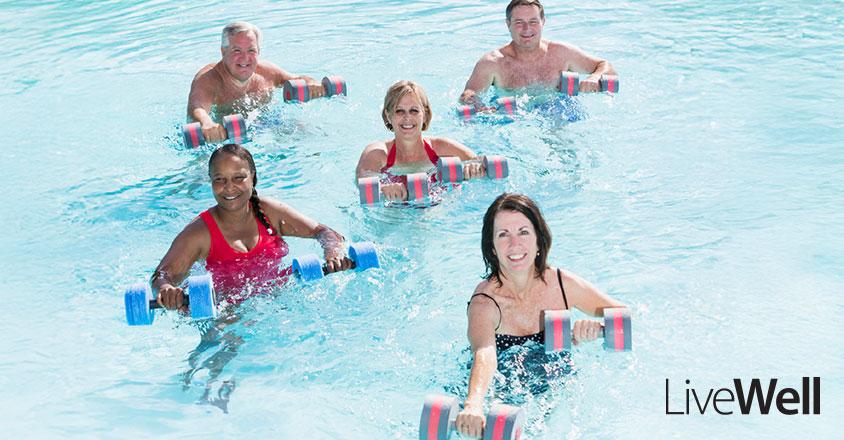
Summer is a great time for being active. Even when it’s hot or humid, there are many ways to exercise safely.
You’re in control with MyChart
Meet Mary. Juggling a busy life with three kids and a successful career, Mary always puts her family’s needs ahead of her own.
Mary needed a way to easily manage her family’s healthcare appointments, message doctors after the kids went to bed and know when it’s time for her annual wellness visit.
She saw a poster in the doctor’s office about MyChart and asked the nurse to tell her more. Mary learned MyChart is a quick way to view parts of her medical record online. Using her phone or computer, Mary can stay organized while on the go.
Mary can choose when and where to manage health information, such as:
- Review upcoming tests and procedures with her morning coffee.
- Receive appointment reminders on her daily walk.
- Check for recommended screenings in the carpool line.
- Ask her provider questions during lunch.
- Schedule lab work at the park.
- View and pay bills while watching TV.
- Request prescription refills on a weekend.
Mary found that she saves even more time before appointments with special features including:
- Simplified paperwork with eCheck-in: Update health and insurance information from the comfort of her home.
- Skip the line: Click the “I’m here” button on the app to check into appointments.
- Touchless arrival: Turn on mobile location notifications to automatically let care teams know she arrived.
With control of her health, Mary spends more stress-free time with her kids. She and her husband learned how to securely share their medical information to have better peace of mind.
Plus, she’s used “Find Care Now” to schedule urgent care and orthopedic urgent care visits. Many providers also offer online appointments and lab draw scheduling.
Visit mychart.genesishcs.org to get started or download the app from the Apple and Google app stores. An access code is not needed. You can add Genesis HealthCare System to an existing MyChart account.
Talk to your provider with questions.

Do you use MyChart?

Juggling a busy life with three kids and a successful career, Mary always puts her family’s needs ahead of her own.
Quick and painless - You could save your life with a lung cancer screening
A lung cancer screening performed with a low-dose CT scan can increase your chances of surviving lung cancer by 20% if you are considered high-risk. If you meet the requirements, there is a good chance you will qualify for a free, low-dose CT scan.
Requirements:
- Have a 20-pack-year or more history. A pack-year means smoking an average of one pack of cigarettes per day for one year. For example, a person could have a 20 pack-year history by smoking one pack a day for 20 years or two packs a day for 10 years.
- Smoke now or have quit within the past 15 years.
- Are between 50 and 80 years old.
- Have no signs or symptoms of lung cancer.
Screening details:
- A low-dose CT screening produces a 3D image of the lungs using less than 25% of the radiation of a regular computerized tomography (CT) scan.
- The screening helps doctors find lung cancer early, when it is usually easier to treat. This can increase your odds of surviving lung cancer and allow for more treatment options.
- The exam is extremely easy. You lie on a table that slides into a machine. The machine takes pictures of the inside of your body. It only takes about one minute, requires no medications or needles and is painless.
More on screening and quitting tobacco
-
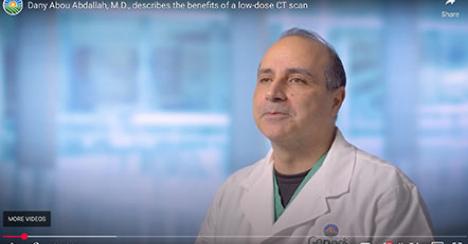
Video
Find lung cancer earlyWatch a video about the benefits of a low-dose CT scan with Dany Said Abou Abdallah, M.D., Fellowship-trained and Board-certified Pulmonologist/Critical Care and Sleep Specialist at the Genesis Lung Center.
Watch now -

Article
Quitting smoking: Immediate and long-term benefitsRead our article about the positive changes the body experiences when not smoking.
Read now -
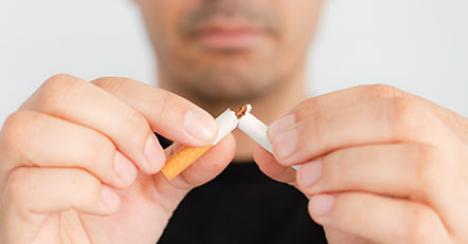
Podcast
Professional tips for quitting tobaccoLearn about services and support available on the Genesis podcast, “Sounds of Good Health.”
Listen now
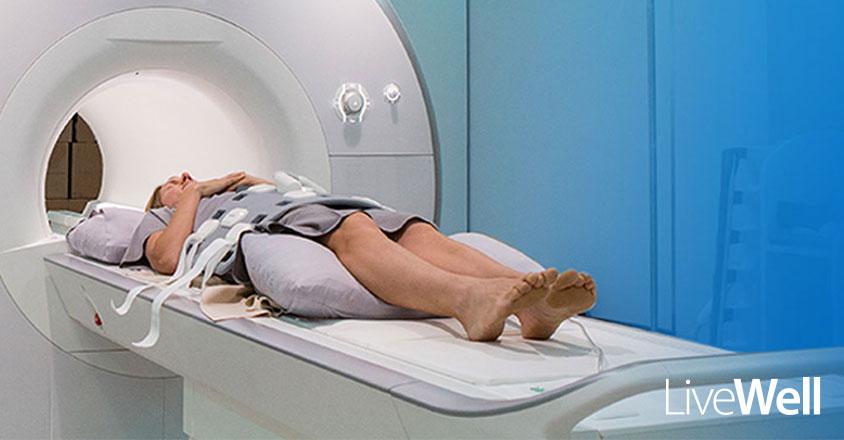
A lung cancer screening performed with a low-dose CT scan can increase your chances of surviving lung cancer by 20% if you are considered high-risk.
Pump up your heart health
According to the Centers for Disease Control and Prevention, almost 120 million people have high blood pressure or are taking high blood pressure medication.
The American Heart Association (AHA) describes blood pressure as the force of blood against our artery walls as it runs through our bodies. Our hearts push blood into vessels with every beat.
Blood pressure readings are measured in millimeters of mercury, or mm Hg, and include two numbers:
- Systolic pressure, the top number, is the pressure against the artery walls as the heart beats. This number is recorded first.
- Diastolic pressure, the bottom number, is the pressure against the artery walls between heartbeats. This is when the heart rests.
A doctor diagnoses high blood pressure, or hypertension, when readings are regularly too high. A healthy reading for adults is less than 120/80 mm Hg. Ranges vary for children. High blood pressure can also affect pregnancies, resulting in conditions such as preeclampsia and early delivery.
Treatment
If you’ve been diagnosed with hypertension, integrating healthy lifestyle changes is important. Poor management can lead to additional health concerns, such as a heart attack, vision loss and stroke.
The AHA recommends these tips:
- A diet with fruits and vegetables, whole grains, skinless poultry and fish, fat-free or low-fat dairy products and nuts.
- Lower salt intake.
- Be physically active.
- If you smoke, stop smoking.
- Take prescribed medications.
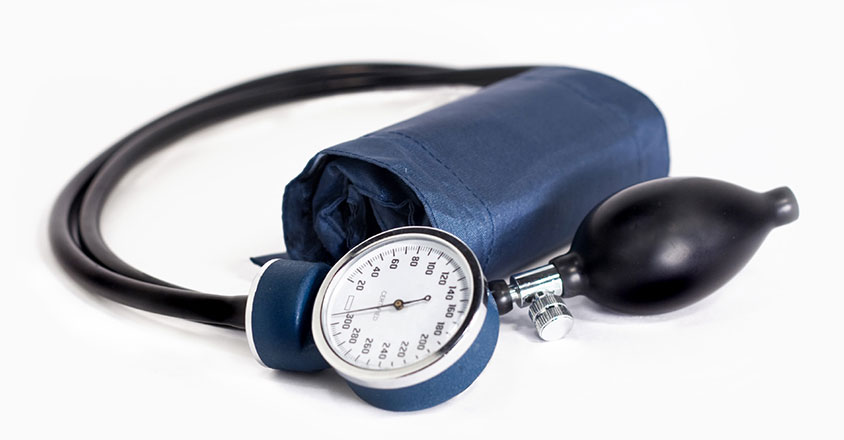
Categories
High blood pressure doesn’t always have warning symptoms. The AHA groups blood pressure readings into five categories.
| Blood pressure category | Systolic pressure mm Hg | Diastolic pressure mm Hg |
| Normal | Less than 120 and | Less than 80 |
| Elevated | 120 to 129 and | Less than 80 |
| High blood pressure stage 1 | 130 to 139 or | 80 to 89 |
| High blood pressure stage 2 | 140 or higher or | 90 or higher |
| Hypertensive crisis | Higher than 180 and/or | Higher than 120 |
Work with your doctor to know your numbers and learn about prevention or treatment. While one high reading isn’t always a sign of concern, call 911 if readings are over 180/120 mm Hg and you have chest pain, shortness of breath, back pain, vision changes, dizziness or vomiting.
Learn more about managing blood pressure
-

Article
Putting the pressure on blood pressureLowering blood pressure doesn’t need to be difficult. Incorporate these habits for a healthy heart.
Read now -

Article
Natural ways to reduce high blood pressureRead about four natural ways to reduce and prevent high blood pressure.
Read now -
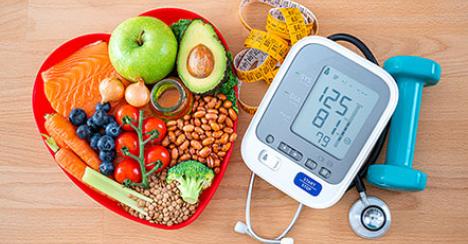
Article
DASH to lower blood pressureThe Dietary Approaches to Stop Hypertension diet helps create a heart-healthy lifestyle.
Read now
Ready to get healthy?
Sign up for our digital newsletters to receive health tips, recipes, success stories for inspiration and information about new doctors to help you on your journey to better health.
Genesis HealthCare System’s Health and Wellness content conveniently provides accurate and helpful information. Your health history and current health may impact suggestions provided through our Health and Wellness content. Although we hope this information is helpful, it is not a substitute for your doctor's medical advice. Before making any significant changes, please consult your doctor.
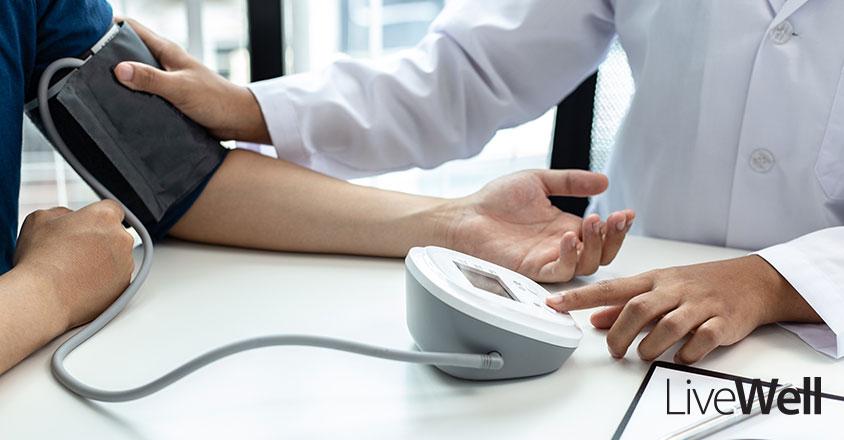
According to the Centers for Disease Control and Prevention, almost 120 million people have high blood pressure or are taking high blood pressure medication.
Take the scenic route
Lace up your boots and go
Close your eyes. Feel the warmth of the sun on your face. Listen to the sound of the wind softly whooshing through the trees. Take a deep breath and inhale the smell of honeysuckle. Delightful imagery like this is real when you spend time walking or hiking outdoors.
Ohio is home to 75 state parks with trails that span more than 7,680 miles. With thousands of miles to explore, you can start a new hobby. Pretty soon, you’ll begin to experience all the benefits of trail walking.
Physical benefits of trail walking
No matter your age or fitness level, staying active is important to your overall health. Walking comes with a long list of positive side effects. According to the National Institute on Aging, staying active helps:
•Reduce your risk of heart disease.
•Improve arthritis.
•Increase energy levels.
Mental benefits of trail walking
A Stanford University study found that people who walked for 90 minutes in a natural area showed decreased signs of depression. Through this study, researchers show a link between nature and improved mental health. Walking can:
•Reduce anxiety and depression.
•Regulate your sleep.
•Improve your memory.
Trail walking tips
Before you hit the trail, there are a few things you should keep in mind. Most importantly, you need to stay hydrated. Bring water to sip on throughout your walk.
Protect your skin and eyes from the sun. Apply sunscreen before you head out. For extra protection, consider wearing a hat and sunglasses.
A good pair of shoes will make a big difference in your ability to hit the trail and stay on it. Find a pair that provides comfort and stability. This will help you tackle hills and uneven sections with ease.
While you’re on the trail, keep an eye out for native plants and wildlife. Taking in the sights and sounds of the outdoors can help keep you motivated.
Finally, go at your own pace. Any amount of movement is good for you. If you need to, start slow. Once you feel comfortable, you can add distance to your walks. Find your local state park or nature preserve and enjoy your time outdoors.
Before you begin a new exercise routine, be sure to talk it over with your primary care provider.
Safety tip
Prevent exposure to the infected ticks that transmit Lyme Disease. Listen to Jignesh J. Modi, M.D., a Board-certified and Fellowship-trained Infectious Disease Specialist at Genesis HealthCare System’s Infectious Disease Clinic, discuss symptoms, treatment and prevention of Lyme Disease in our podcast, “Avoid getting ticked off by Lyme Disease.”
Genesis HealthCare System’s Health and Wellness content conveniently provides accurate and helpful information. Your health history and current health may impact suggestions provided through our Health and Wellness content. Although we hope this information is helpful, it is not a substitute for your doctor's medical advice. Before making any significant changes, please consult your doctor.
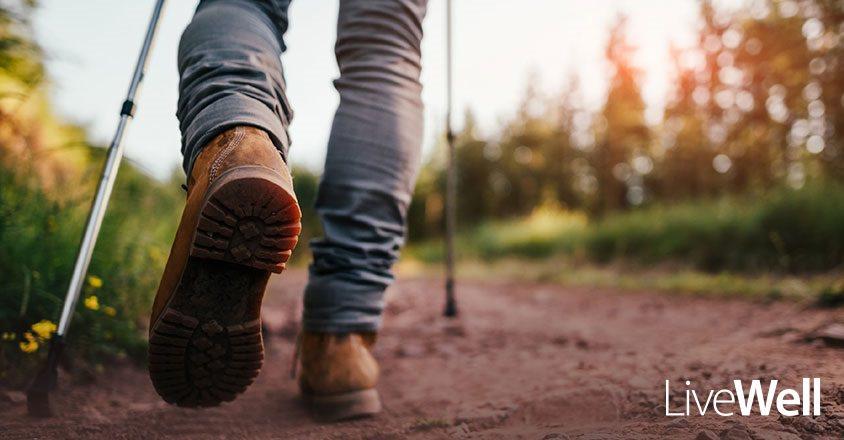
Ohio is home to 75 state parks with trails that span more than 7,680 miles. With thousands of miles to explore, you can start a new hobby. Pretty soon, you’ll begin to experience all the benefits of trail walking.
Empty nest syndrome
If your child is a member of the class of 2024, full speed ahead is the only speed they go. They’re with their friends at every party, movie, game, concert and more. And even though you’d love to spend some time with them, you’re not fighting them on this because they’re “never going to see these friends again after senior year.”
Since when do you hesitate to say no?
What is happening to you?
Chances are you’re in the early stages of Empty Nest Syndrome, the adjustment period parents go through when their last child leaves the nest. It affects both men and women. Some parents try to adjust early while others hope for business as usual all year. Some don’t feel the full brunt until after the child has moved out. Most people report feeling sad. Some are angry. Others are thrilled. It’s complicated.
Here are some common symptoms of empty nest syndrome:
Loss of purpose. You miss the structure and the timetable of parenting. What are you going to do with all this free time?
Loss of control. You’re wondering if your child is safe and taking care of themself. It can be hard to let them figure it out.
Loneliness. You miss your child’s companionship.
Emotional distress. You might find yourself sobbing in your vehicle after the final goodbye. It’s a common reaction. Pat yourself on the back for reaching your vehicle.
Prepare yourself
How you feel when the child that qualifies you to join the empty nest club leaves depends on many factors. If you’re married, is your marriage stable? Were you a stay-at-home parent? How are your finances? Are you employed, and is it fulfilling work? Decide what you want in life. The more balance you can create in your life before your nest empties, the more successful the transition.
The one tip to follow
Stay connected. Keep in touch. Say “you’ve got this” often. Send texts or cards to let them know you’re thinking of them. Don’t expect to hear from them daily, or even weekly. Trust that absence really does make the heart grow fonder.
Most importantly, if you find yourself struggling with this transition, you’re not the only one. Reach out to a counselor for support and strategies to manage this new phase of life.
P.S. You’ve got this.
Go to genesishcs.org/yourhealth for more Wellness Resources.
Genesis HealthCare System’s Health and Wellness content conveniently provides accurate and helpful information. Your health history and current health may impact suggestions provided through our Health and Wellness content. Although we hope this information is helpful, it is not a substitute for your doctor's medical advice. Before making any significant changes, please consult your doctor.

If your child is a member of the class of 2024, full speed ahead is the only speed they go. They’re with their friends at every party, movie, game, concert and more.
Blueberries are healthy winners
Blueberries can lower your chance of having a heart attack.
True or false?
True: An 18-year Harvard study of more than 90,000 people found participants had a 34% lower chance of having a heart attack if they consumed three or more servings of blueberries or strawberries per week.
Blueberries provide potassium.
True or false?
True: According to the U.S. Highbush Blueberry Council, blueberries are a source of potassium, magnesium, vitamins C and K and fiber. Even better, all those nutrients only add up to 80 calories per cup.
Blueberries can lower your chance of Type 2 diabetes.
True or false?
True. According to a 2013 study in the BMJ journal, eating blueberries, which contain anthocyanins, three times a week can reduce your risk of becoming diabetic.
Blueberries are good for your mind.
True or false?
True. A 20-year study on women 70 years of age and older from Harvard showed that eating blueberries at least once a week or strawberries at least twice a week may delay cognitive aging by two and a half years.
With all these health benefits, it is time to start gobbling blueberries. To make sure you get the most out of your blueberries, here are a couple of tips. The darker the color means there are more nutrients in the blueberries. Frozen blueberries are just as beneficial as fresh blueberries.
Genesis HealthCare System’s Health and Wellness content conveniently provides accurate and helpful information. Your health history and current health may impact suggestions provided through our Health and Wellness content. Although we hope this information is helpful, it is not a substitute for your doctor's medical advice. Before making any significant changes, please consult your doctor.
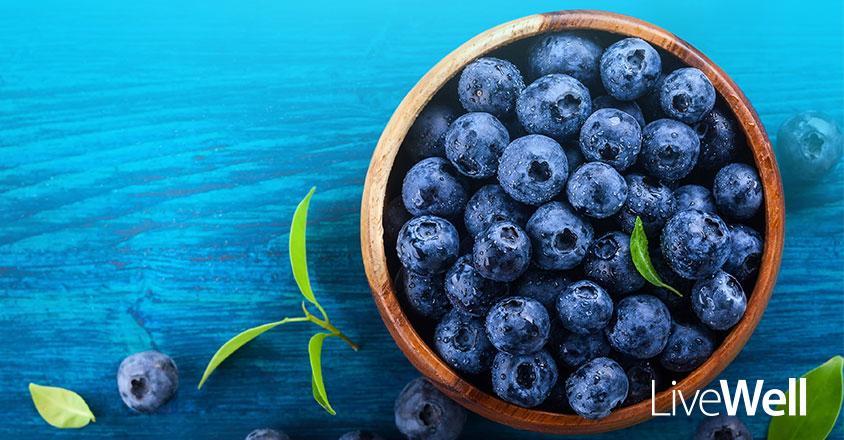
Learn about the amazing benefits of blueberries.